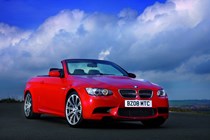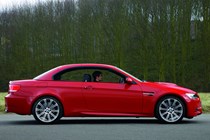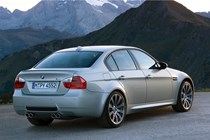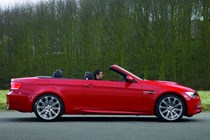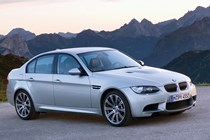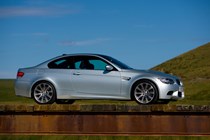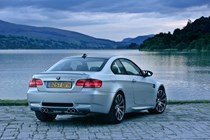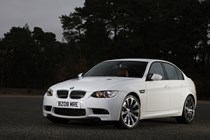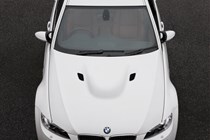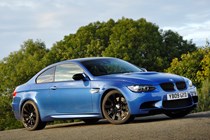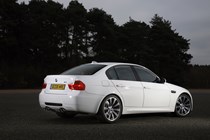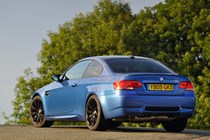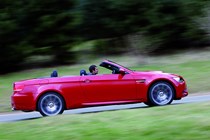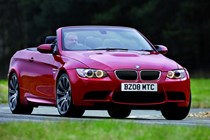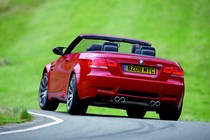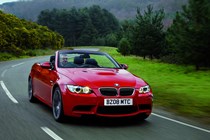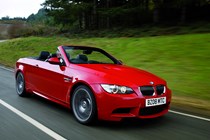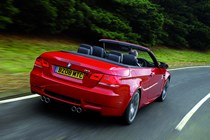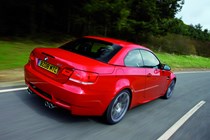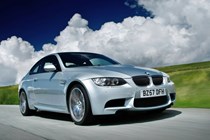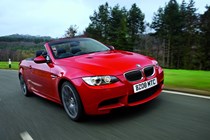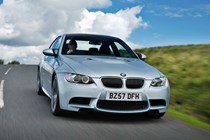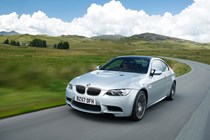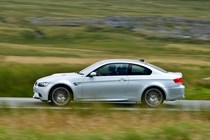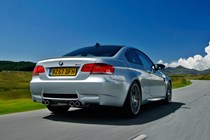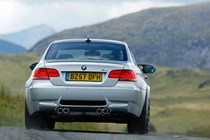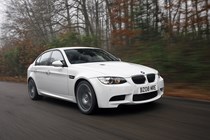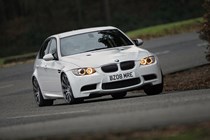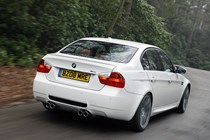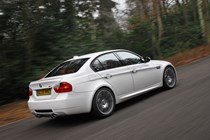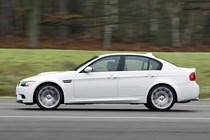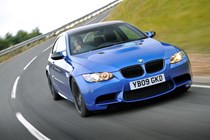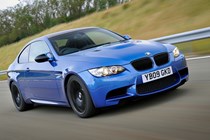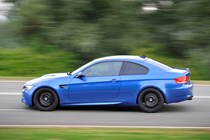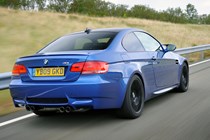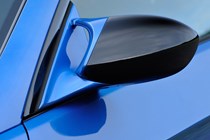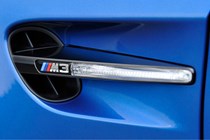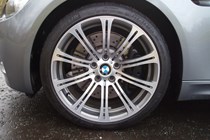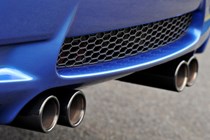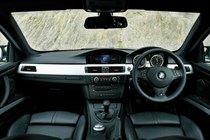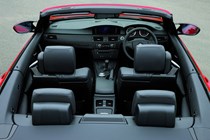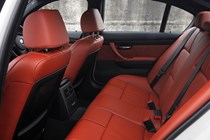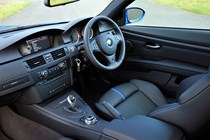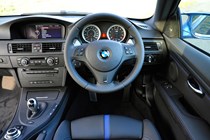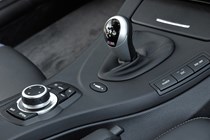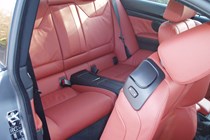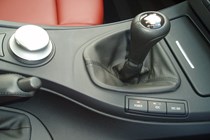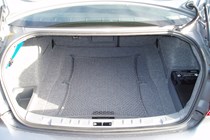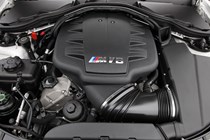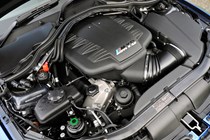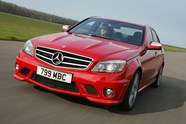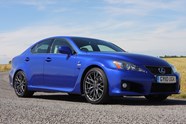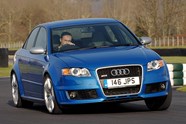
BMW 3-Series M3 review
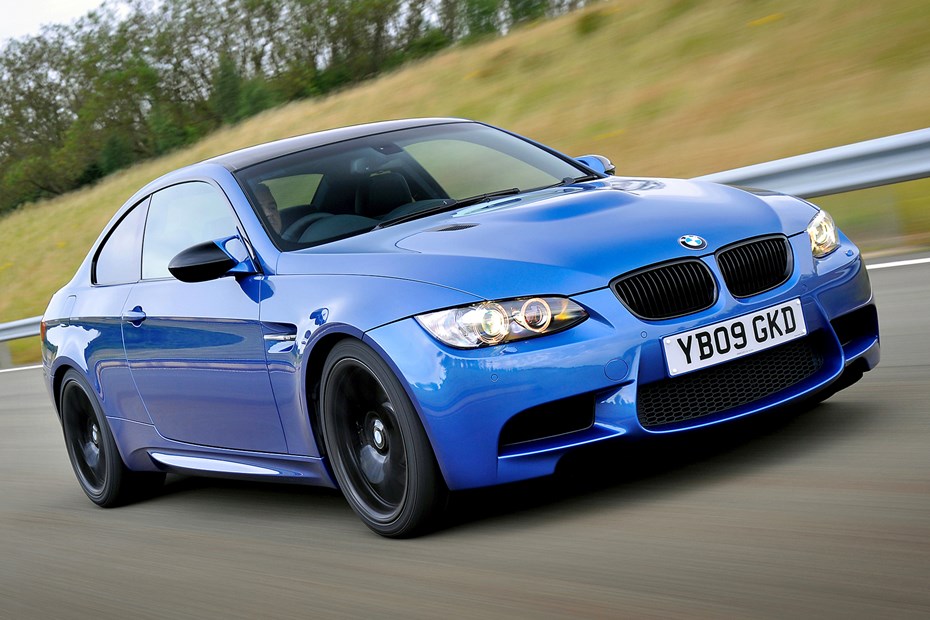
At a glance
| Price new | £51,645 - £73,275 |
|---|---|
| Used prices | £7,530 - £23,034 |
| Road tax cost | £735 |
| Insurance group | 43 - 45 |
Get an insurance quote with

|
|
| Fuel economy | Not tested to latest standards |
| Range | 291 - 346 miles |
| View full specs for a specific version | |
Available fuel types
Petrol
Pros & cons
- Ultimate driver's car
- Purposeful styling
- Sublime V8 engine
- Standard leather and sat nav
- High running costs
- Hard ride
- Fairly plain cabin
- Many abused examples for sale
BMW 3-Series M3 (07-13) rivals
Overview
The M3 is a favourite of car enthusiasts. Its race heritage dates back to the 1980s, although at first the 2007 model seems far too well mannered to play the part of a road-going race car. Available as a saloon, convertible or coupe, there are some muscular styling additions to distinguish it from the standard 3-Series models, hinting at the car’s potential.
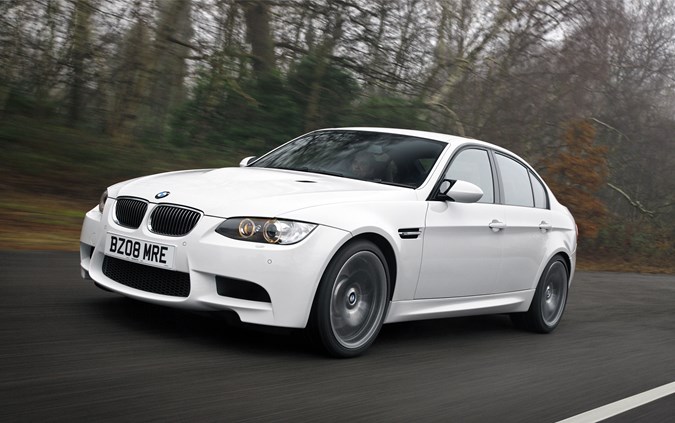
The BMW M3 for 2007 saw a new generation of Bavarian barnstormer. Gone was the in-line six-cylinder engine, replaced with an all new 414bhp 4.0 naturally aspirated V8.
It took a little while for ‘purists’ to fully accept the E92 shape M3, with claims the new bigger engine would ruin the pin sharp handling. In truth however, this all new V8 power unit did the car a favour, being just under 20kgs lighter than the out-going sixer.
Initially, a manual six speed gearbox came as the only transmission option, a sequential automatic coming along later.
The E92 went on a little bit of a diet in this guise, not that you would really notice if you are accustomed to BMW’s usual girder tough build quality. Differences between the M3 and the 3-Series include weight shaved off in the rear seat assembly, a different front subframe and the fitting of a carbon fibre roof, as well as the potent engine.
Handling and ride saw some subtle improvements too and an electronic selectable damping programme gave three options of compliance to the dampers ranging from comfort to all-out race track settings. This notable suspension improvement in one stroke fought off the hoodlum monster image the M3 once had into a credible superb all-rounder.
Although the V8 was a change from previous generations, every M3 has been quite dramatic in evolution; the E92’s successor, the F80, featured the first turbocharged M3 engine – and the latest G80 (based on the G20 3-Series) even offers four-wheel drive.
BMW E92 M3 (2007-2013) known faults and common problems
1. Uneven front tyre wear
Be wary of anything with mixed brand or budget tyres – cheap rubber equals cheap owner and look out for feathered edges indicating constant hard driving or uneven wear that could indicate worn track rod ends, tired bushes or even more sinister – previous accident damage.
2. Fluctuating idle speed
Some variation in idle speed can be accepted, but if this varies by 2-300rpm on a warm engine this could be pointing to a choked up engine that’s never been really been run in or used in zest or a faulty ICV unit (idle control valve) the latter is a pretty common issue.
3. Brakes
Fully inspect the brakes and discs for any serious pitting, glazing or lips at either extreme edge of the disc. Use buyer-beware caution on cars with poorly painted callipers and keep an eye open for pads with a decent and well known make of material. There are some seriously awful quality parts in the aftermarket world and some owners will cut corners in this area.
4. Engine bottom end wear
Listen carefully for faint knocking or ticking from the bowels of the engine. It isn’t uncommon for the V8 to be thrashed to the near point of death in the wrong hands – it has a redline of just short of 8500rpm. Main bearing failure isn’t unheard of and, if not caught in time, will result in crankshaft failure or running bearings to the point of total engine destruction. If the vendor boasts of a new engine, ask where, when and by who; if not from a known source or supplier, you stand a good risk of buying a pup.
5. Take all costs into account before you commit
An M3 of any vintage is an aspirational car for some. If you are trading up from say, a 320i, or any other standard saloon car regardless of brand, ensure you are aware of the running costs.
Items crucial to the performance of the M3, such as brakes and tyres, as well as servicing, fuel consumption and insurance premiums is going to be substantially more expensive. An eager dealer may be able to coax you with affordable monthly payments, but the initial cost of the car is the tip of the iceberg if you’re on a tight budget.
6. Check paperwork and history
Take nobody’s word of mouth as gospel, even a respected dealer. Use the govt site (insert here) to check the MOT history of the car and previous advisory notices and ALWAYS check for previous accident and current finance status. Examine all paperwork and ensure service book stamps come with workshop job sheet copies, card receipts and or other proofs of work or payment – forged histories are rife. Ignore any car with skimped, fast fit or missing service history.
7. Does the vendor match the car?
Too many M3s fall into the wrong hands once they get older. Does the seller know the car’s history and capabilities inside and out? Does their address match the one on the V5C, and look more like a backyard scrap dealer than a caring owner? Many serious criminals adore an older M3, meaning many cars have history – both taking part in, and as victims of crime. If in any doubt just ignore the car – all good things do come to those who wait. Any M3 being sold from a dog rough traders pitch is equally worth running a mile from.
8. Oil leaks
Have a good look around the floor below the engine and gearbox for signs of oil leakage from the front crank pulley, the crank seal behind the flywheel and rear differential. Any sign of clutch judder when pulling away when cold indicates a warped or excessively worn clutch plate, or oil contamination of the plate linings.
9. Modified cars
Take note of cars with uprated components to the suspension, brakes or bodywork – especially if they have been wrapped – what sort of paintwork horrors is it hiding? Any insurance company worth its salt will wiggle out of any claim if uprated or customised parts aren’t declared on the owner’s policy. Also, when browsing privately, make sure you have sufficient insurance cover before you take a test drive – if you bend it and it’s your fault, you’ve bought it – literally.
10. Check interior electrics
The i-drive system can seem a bit daunting to the novice. Once used to, however, it’s a neat function. If you know how it works, check it all works properly along with all the other buttons and switches. If not, ask the vendor to show you how. Electrical gremlins can and do occur, especially if the car has a damp interior and these can be both annoying and costly to root out and fix.
For many buyers the sophistication of this generation of M3 – and associated price – ensured the popularity of M3 bodykits and M-Sport accessories on normal models of 3-Series. As the cars get older, M3 conversions using secondhand parts are not unheard of either – but you want the real thing if you’re spending good money.
At a time when most people seem to be concerned about carbon footprints than a carbon-fibre roof, BMW performed the trick of increasing engine size and power output, while reducing fuel consumption and CO2 emissions. However, the M3 remains a thrilling drive and certainly able to stake a claim as the best driver’s car in its class in the face of ever stiffer competition from Audi and Mercedes-Benz.



